
Why I loved the Fujifilm X-T1 and Sent it Back
Review by Richard Rivera
Can the proverbial fly-in-the-ointment
lose a sale? By now many of us are
familiar with the virtues of the
Fujifilm X-T1, which was released back in January of 2014. It is an APS-C size sensor endowed with Fuji’s proprietary X-Trans CMOS II matrix. After hearing so much about it, I decided to try it for myself. I compared the Fuji X-T1 to other cameras I happened to have on-hand, such as the Sony (Alpha) NEX-7, the Olympus OM-D
E-M1, and the Olympus OM-D E-M10, and will occasionally make reference to them.
HANDLING
In my experience the Fuji X-T1 with the zoom XF 55-200mm f3.5-4.8 handled really well, primarily because the aperture ring is on virtually every Fuji lens and the shutter speed dial is on the top deck, which means that hunting through menus is minimized and adjusting exposure is easy. Fujifilm has tried to address efficient camera design head-on in several positive ways. It has no PASM dial (Program/Aperture Priority/ Shutter Priority/Manual). Virtually all of their lenses have an aperture ring. The top deck controls, such as ISO dial, shutter speed, shutter release, and exposure compensation dials, are logically laid out. Are all the controls perfect? No, but it is certainly far above in accessibility than the typical controls found on many DSLR’s and mirrorless on the market. By retaining dial controls, removing the PASM dial, and incorporating aperture rings on nearly all its lenses that can be alternately placed on “A” (automatic), Fuji has re-evaluated the standard “givens” that nearly everyone has taken for granted as the status quo in camera design and displayed genuine innovative thinking.
To set the camera for aperture control you leave the shutter speed dial on “A” and change the aperture ring on the lens. Similarly, to make your shutter speed the priority, a user sets the lens ring to “A” and sets the desired shutter speed on the shutter dial. To set the camera to fully automatic or Program mode, both the lens ring and shutter speed dial are set to “A.” To have full manual control, the users moves both the aperture ring and shutter speed dial off “A.” Logical and clear. And a departure from the status quo.
However, finding where things are in the menu (like how to reposition the AF spot), are definitely unintuitive. Reviewing images without a touchscreen, which is standard on the Olympus models, is considerably slower on the X-T1 than on the E-M10, even with the X-T1’s Focus Assist button which instantly magnifies the Playback image. The LCD is amazingly sharp but being limited to the scroll wheel on the back is frustrating, especially since its placement is so awkward. The reason it is difficult to turn is that the knurled thumb ring for magnification is just above the rubberized surface of the thumb-rest area, and always
catches your finger as you
attempt to turn it.
And performing a quick one-press
focus by using the AF-L is very
awkward due to its placement.
You will need to shift your entire
grip in order to press the button.
Very poor placement.
Looking at photos of the body design and grip one would assume that grip on
the X-T1 body is too short and uncomfortable, but that actually is not the case.
The camera is so beautifully balanced that the weight and grip feels just right.
ELECTRONIC VIEWFINDER
In practice the electronic viewfinders (EVF) on the Fuji X-T1 and Sony NEX-7 are both equally good at 2.3 million dots, although the Fuji has slightly greater viewfinder magnification of 0.77 versus 0.73 on the Sony. Both display excellent detail, contrast, and color.
The EVF of the X-T1 is large, bright, and a pleasure to use. Turning the camera vertically for portrait shots brought another pleasant surprise, all of the data indicators were re-positioned to the bottom of the frame for a vertical format making them easy to read. Very clever.
Lens performance on the XF 55-200mm f3.5-4.8 zoom is excellent and creates sharp images. Turning the lens aperture ring has a great feel, the click stops bespeak quality as well as the entire lens, which feels solid and very well-made. The camera handles amazingly well which is why my disappointment was deepened by the image quality.
IMAGE QUALITY
Fuji RAW files are not un-processed, and that really surprised me. Although RAW files are proprietary and vary from manufacturer to manufacturer, they are left fairly, well, raw and untreated. Which makes them highly adjustable in a RAW processor like Adobe Camera Raw Bridge, Lightroom, or Capture One, where the user can lighten, darken, sharpen, saturate, etc. Fuji has gone one step beyond and set an unalterable degree of noise reduction in their RAW files as a default.
The results depend somewhat on your settings for both Sharpness and NR (noise-reduction). However, there is no fully overriding the X-T1's defaults. Even with the minimum settings for noise reduction you see that there is still a noticeable loss of detail as shown below.
I noticed something about the way Fuji interprets dense detail (as with tree bark or puddle highlights) not in a perceptual way but almost as a logarithmic pattern. This is hard to explain so I have included some samples. (Please view the duck picture further down, and the stone at its lower right.) The treatment is more noticeable in JPGs than RAW, and definitely if you are a pixel-peeper that views at 100%. Fuji’s processing does an interesting thing under certain circumstances: when it finds a random texture in nature it interprets it as a repeating pattern while also attempting to randomize its look. Reflection on an asphalt surface takes on a look of an interpreted “randomness” that evokes the original but seems technically manufactured. If you leave your settings for Sharpness and NR (noise reduction) at their defaults you will wind up with fine detail that looks as if it has been processed through a painterly Photoshop filter. Stunning, beautiful, and artificial looking. Something akin to a photo-realistic painting by Richard Estes or Chuck Close than a photograph. Apparently it is an artifact that many people like and would account somewhat for the X-T1’s popularity. Unfortunately I still like my photographs to look like photographs. The better images I managed were with a Sharpness setting of +2, and NR of -2.
The RAW files of other systems like Olympus, Nikon, or Sony bear a more “natural” semblance to the natural texture—be it dirt, puddles, or rust—because they do not
pre-process their RAW files as much and have leeway for adjustment. Fuji attempts to interpret it by computerization, which may or may not relate to their choice of X-Trans matrix instead of Bayer pattern sensor. Or it may just be Fuji's attempt to eliminate all “grain” (noise) from the image. I do not know. When I spoke to Fuji’s representatives I was unable to get any further information on any settings that would minimize noise reduction even further. Keep in mind that RAW is a proprietary format that varies with each manufacturer.
My own preference is to process RAW files in Adobe Camera Raw and adjust noise reduction as I see fit to my own tastes, rather than have a camera maker adjust it for me to their liking. A fellow photographer asked me, why do want to add noise to your image? My answer is that I do not want noise reduction to be so aggressive that there is a noticeable obliteration of detail, which is what occurs in the samples I have posted. And if I do desire a painterly effect, then I prefer to create it in Photoshop.
MANUAL FOCUS
Shooting on a tripod meant that I turned off the lens’ IOS (image stabilization). With manual focus enabled and IOS “off” the camera was very difficult to focus accurately. At times I thought I had nailed it but results showed I did not. The reason was that although I focused manually and only adjusted the aperture, the focus seemed to shift on its own. Firing the camera five times (once for each aperture f-stop change) was enough to shift focus just enough to make the subject a tad soft and sharpen the background 25 feet away. A strange occurrence. On the second occasion I purposely
re-checked focus each time and even doing so, it happened again. I have been operating cameras for forty-five years and this was the first time something like this occurred with any camera. It makes me yearn for the days were lenses did not focus-by-wire. [Ed. Note: there are adapters on the market that allow the use of manual lenses on the Fujifilm X-T1.]
Another issue that disturbed me is that with fly-by-wire focus, the ring continues to turn without end, and the focus speed is inconsistent. It may focus quickly and snap into focus, or very slowly, regardless of the rate of turn. This problem with focus-by-wire is not limited to Fuji.
SHARPNESS
Image Sharpness is dependent on settings that range from +2 to -2, and NR (noise reduction) settings also range from +2 to -2. Those settings predetermine the inherent sharpness of the RAW file. The greatest degree of sharpness is achieved by using the setting of Sharpness +2 and NR at -2. There is no further overriding of those settings unless Fuji REVISES THEIR FIRMWARE.
When I spoke to the people at Fuji they were aware of criticism about the plastic/processed look of the RAW files. One suggestion from forums and others who complained about the same thing was using Capture One instead of Adobe Camera Raw, Bridge or Lightroom. I tried Capture One and never was able to achieve a natural look with the Fuji RAW files. I also tried to use DXO Optics Pro 10 but they did not have protocols for opening X-T1 my files at the time of writing.
In the end I returned the Fujifilm X-T1 more than a bit disappointed. I really liked that camera. The handling, weight, and sharpness of the lenses. Unfortunately I could not abide what looked to me like a plastic “computer” look. Sorry Fuji. I look forward to further revisions in their firmware that might resolve the issue.
PLUSES
*great large view EVF 2.36 mil dots
*silent shutter AWESOME !!
*TILT LCD
*vertical shift of data for portrait shots. Awesome.
*SD card port on side
*1/8000 sec up to 1/32,000 sec via electronic shutter !!! circumvent ND filters
*good feel and weight and balance.
*+/- exp.comp. dial
*55-200mm f3.5-4.8 very sharp even wide open
*aperture ring on lens is excellent
* fly-by-wire focus with a continuously turning focus ring is inconsistent.
*16MP APS-C X-Trans sensor
*No Moiré due to non-bayer pattern
*No Optical-low-pass filter so results should be sharper
*firmware v3 fixes improves handling.
*intervalometer
*Focus assist button
*multi-size focus area
*weather sealed
*LMO light modulation optimizer (works only for JPGs) to minimize diffraction
*very good JPGs
MINUSES
-preset Noise Reduction in RAW, cannot be overridden
-focus-by-wire inconsistent speed (slow or jump) when manual focusing
-NO touchscreen. Makes reviewing images a lot slower
-NO in-body stabilization
-AF-L button positioning awkward to use, requires reposition hand
-to easy to inadvertently change Drive settings under the ISO dial
-ISO knob. Awkward as a one-handed press center button to turn
-MIC input is non-std 2.5mm. Requires adapter
-back knurled ring is too recessed and above a rubberized strip that catches
-NO recharge battery in-camera
May 19, 2015
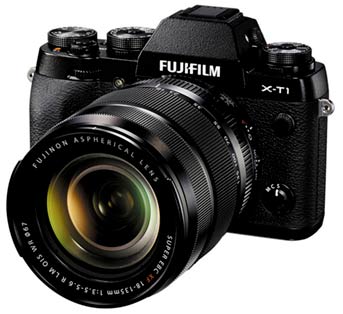
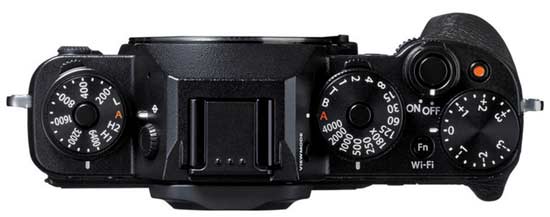

The mallard shot is shown in full below, with detail sections enlarged. Details of his webbed foot, duck feathers on his back, and the stone at lower right, all show computerized heavy noise reduction that is standard in Fuji’s RAW file, and unalterable. Sharpness was set to +2 and NR (noise reduction) to -2. Details are at 100% magnification.
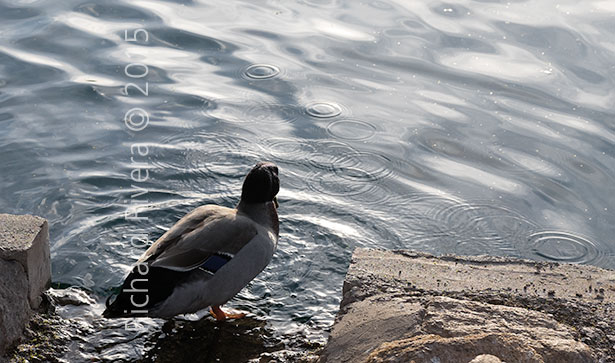
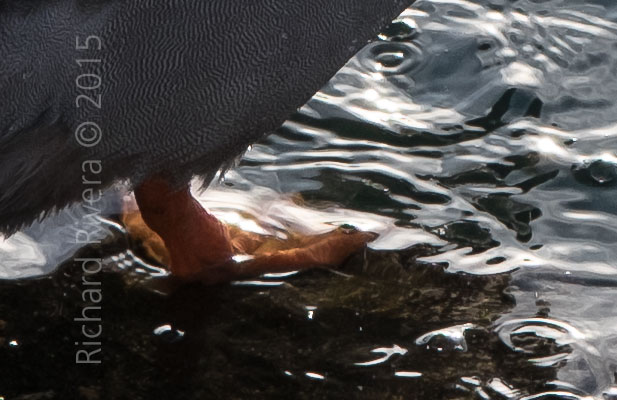


A side-by-side comparison with the Fuji X-T1 image shown here, and the Olympus E-M10 image below it. Although E-M10 is a Micro-Four-Thirds camera, with a much smaller sensor than the APS-C in the Fuji X-T1, I believe it captured more detail in the tree bark merely because Fuji insists on noise reduction that smooths detail into painterly blobs. Notice the gravel at left of the tree in the Fuji image. Images below are shown at 100%. Shots were processed in Adobe Camera Raw version 8.7.1.





Full shots above and details of central portion shown below, the Fuji X-T1 (left) and the Sony NEX-7 (right) image. Both sensors are APS-C sized.
Below, image A was shot with the Fuji X-T1, and image B was taken with the Sony NEX-7. Note the greater amount of detail in the small yellowish flowers in the Sony image.
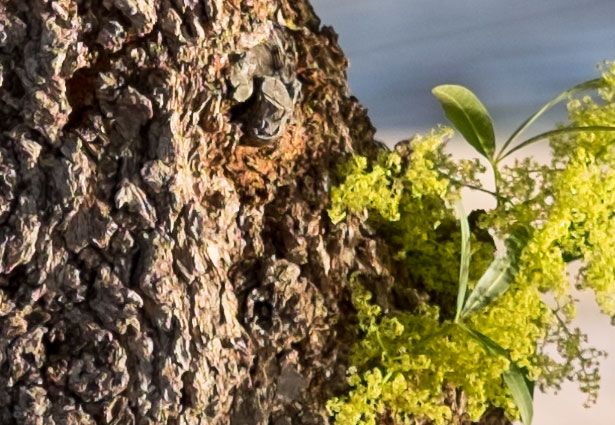
A

B
Copyright © 2015 Richard Rivera & Rivera Arts Enterprises All rights reserved. No copying or reproduction of any kind without express written permission from Richard Rivera
Legal Disclosure Camera Sense and Eagles of New York are trademarks of Elk Partners LLC